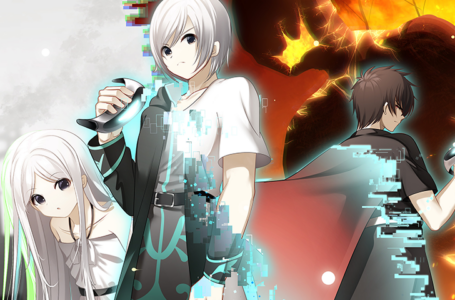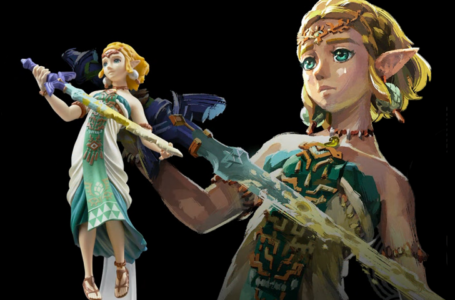Arsonist Heaven shows why retro-style devs should do their homework
I honestly tried to give Arsonist Heaven a fair chance. But by my fifteenth attempt at the first boss, who can melee hit you even when his sprite isn’t actually touching you, I just had to put the game down and start writing. Because as bad as this game is, it’s an excellent case study in why developers attempting to go for a game with a retro-style aesthetic really need to do their homework — and by that I mean extensively studying the games that have really got it right over the years, and exactly why they got it right.
Let us consider first, for example, the concept of “hitstun”. While hitstun is most commonly associated with the beat ’em up genre — it describes how when you punch an enemy, they flinch and are unable to attack you for a split second — it is just as important in other types of reflex-based action game. In a platform action game such as Arsonist Heaven, for example, it is important to provide the player with a means of keeping the enemies at bay while attacking them. In other words, you hit them and they flinch, perhaps flash, and are unable to hurt you for a brief moment.
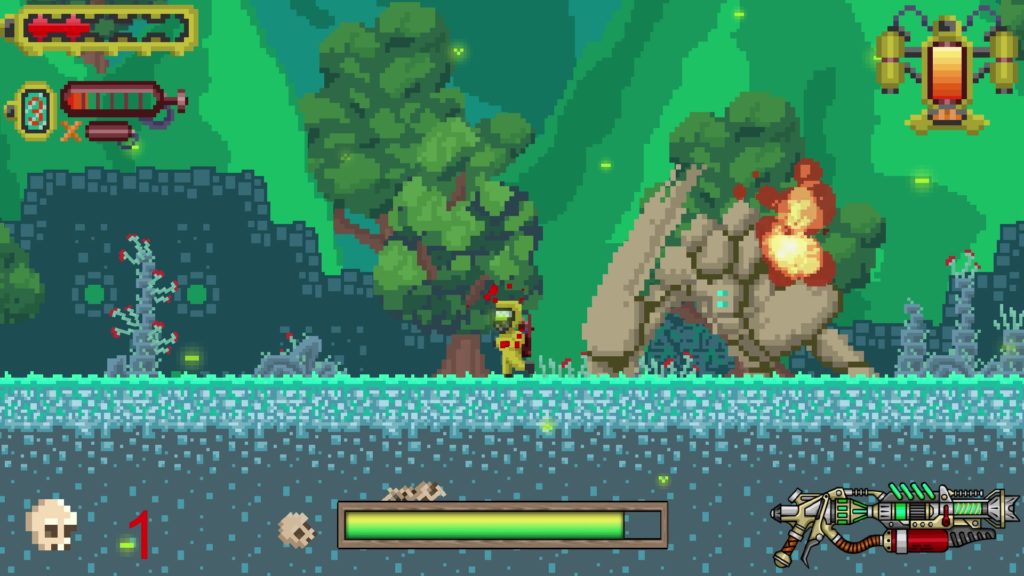
Arsonist Heaven does not do this. While you’re attacking them, the enemies just don’t respond at all, and continue moving. This means that, more often than not, they will come barrelling right into you and deal damage while you’re trying to eliminate them. And there’s practically no means of avoiding that; sure, some enemies have pattern-based movement where they occasionally stop moving, but this window of opportunity is so brief — and your default flamethrower weapon takes so much time to take every enemy down — that it doesn’t really help you at all.
Not a good start them. Let us also consider the matter of traversal. If you are going to provide the player with a limited (albeit recharging) resource to traverse the level, for heaven’s sake make sure that limitation is somehow meaningful to the player — otherwise, simply do not have that limitation in place at all. Most platformers with a “double jump” mechanic, for example, do not limit the character’s ability to double jump because that would be stupid.
Arsonist Heaven, however, does limit your ability to double jump by positioning your ability to do so as a “jetpack”. Any time you double jump using the jetpack, you consume some fuel from a gauge in the corner of the screen. This recharges very slowly, so all too frequently you’ll find yourself simply standing around doing nothing waiting for it to refill when all you want to do is get back to the upper part of the level. This is not adding any sort of meaningful gameplay challenge whatsoever.
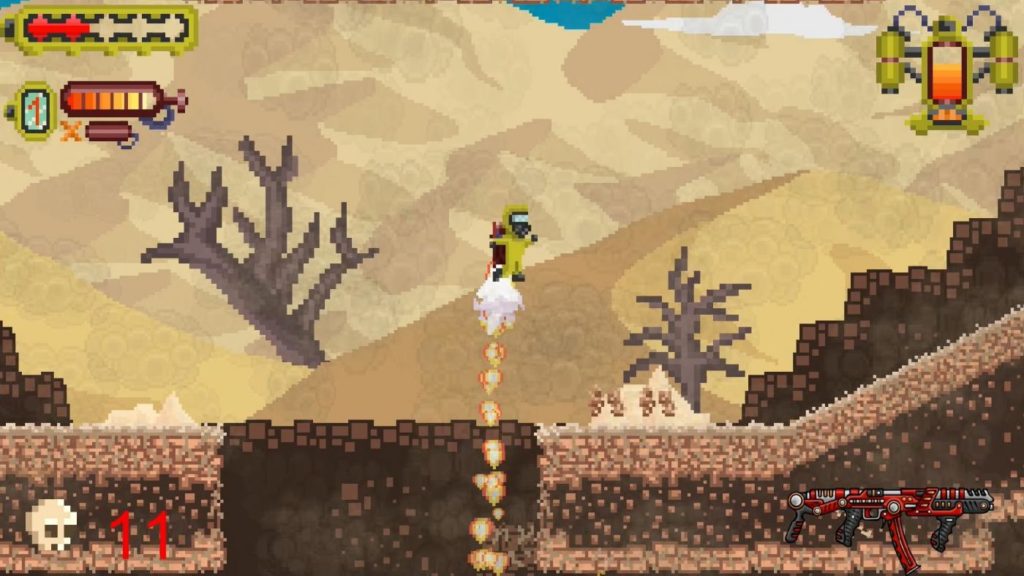
On the subject of traversal, we are hopefully all familiar with the reason that we tend not to see games with blind “leaps of faith” and unexpected drops into instant-death traps any more — it’s fucking annoying. Yes, masocore is a subgenre of platformer — you can blame Core Design’s pre-Tomb Raider title Rick Dangerous for that — and titles like the Souls series revel in encouraging you to fail and learn from the experience.
The difference between, say, being bludgeoned to death by a hiding skeleton in Dark Souls and falling down a pit you didn’t know was there in Arsonist Heaven is that Dark Souls makes you feel silly for not taking proper precautions, or for not noticing obvious warning signs, whereas Arsonist Heaven just makes you shout “FUCK” at the top of your voice for such obviously bullshit game design without warning.
Now let us consider the matter of other limited resources, such as ammunition. If you’re going to limit the player’s resources to complete a level, again this needs to provide a meaningful challenge — and also to be fair. Unless you’re explicitly making a puzzle-centric game, where careful use of limited resources is the main point of the experience, said resources should not be so limited that making just one or two mistakes — or the collision detection being a bit dodgy on one or two occasions — renders the level unbeatable.
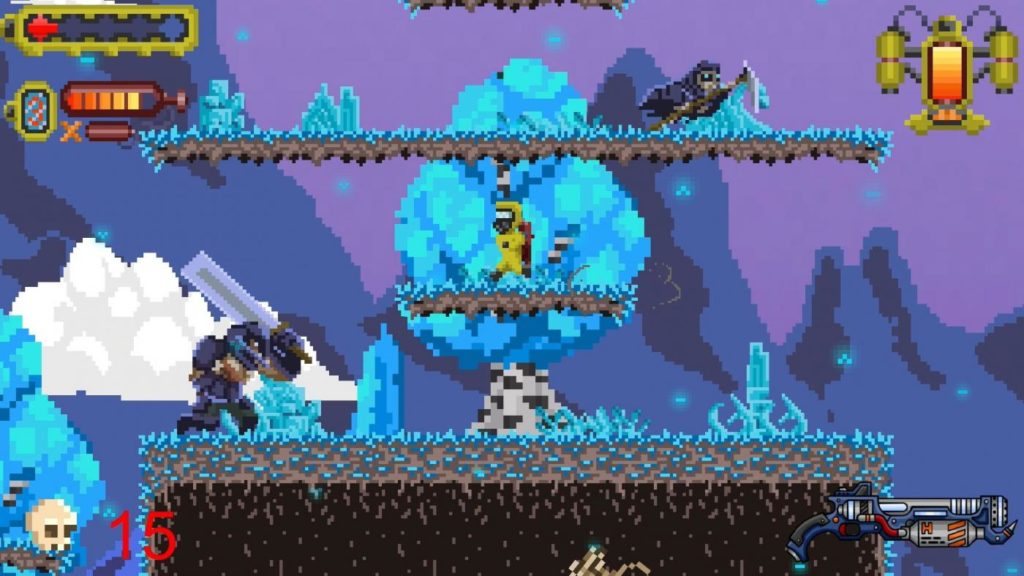
At the very least, provide the player with a weak but nonetheless effective means of attacking when they have no ammunition. See Namco’s Rolling Thunder for the perfect example of how to do this: ammo-consuming weapons fire more powerful bullets that move more quickly, and you can have more of them on screen — but should you run out of ammunition, you can still fire a single weak shot at a time that allows you to progress.
Arsonist Heaven does not do anything like this. If you run out of ammunition for your weapon, you’re just fucked. Granted, each level is fairly short and can easily be restarted — perhaps by jumping down a blind pit trap — but it’s annoying to have to do so after just one or two mistakes, even on the game’s first world.
Finally, let us contemplate the matter of enemy design. The most beloved games of the past that offer a significant challenge factor — let’s say Castlevania and Mega Man, as most people should be familiar with those — can be frustratingly challenging or even seemingly impossible at times, but they’re always beatable in much the same way as Souls games are today: observe the patterns, spot a suitable opening, take advantage of it. Practice enough and you can even make it through these games without getting hit.
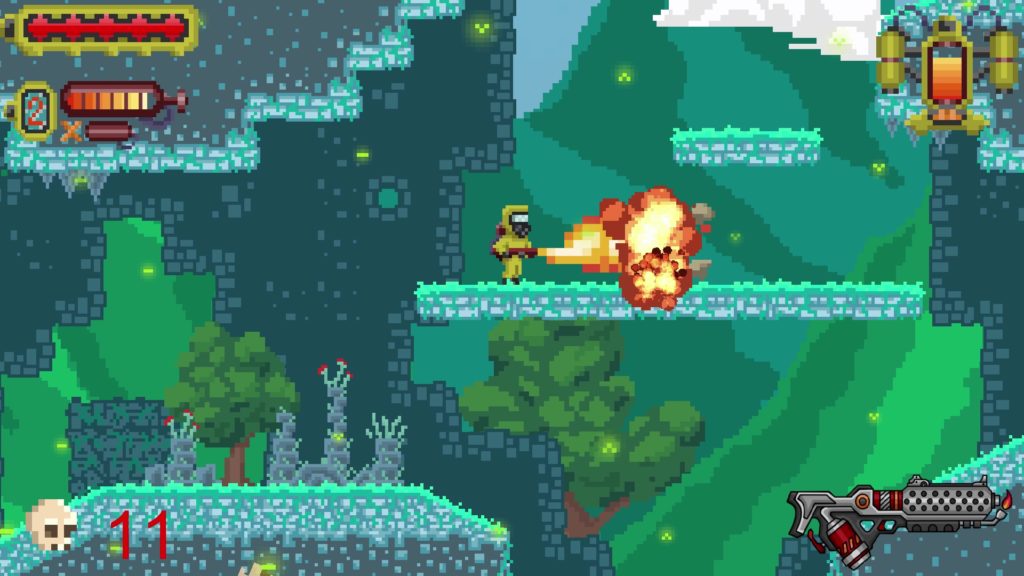
Contrast with Arsonist Heaven, where we’ve already described enemies that keep moving while you’re attacking them and a boss fight where the collision detection is so shonky you don’t actually have to make contact with the boss for his attack to deal damage. You can already see the problem, I’m sure.
Add a dash of enemies that move considerably faster than the player, making it near-impossible to avoid them, enemies that fire extremely high-speed projectiles from off-screen across the width of the entire level and the inability to aim in any direction other than directly forwards — unless you’re on a hill, in which case you aim up or down the hill in the most annoying way possible — and you have a recipe for absolute disaster.
The fact that there are several interface elements in the game that haven’t had their font changed from a default Arial typeface is just the icing on the cack (sic), really.
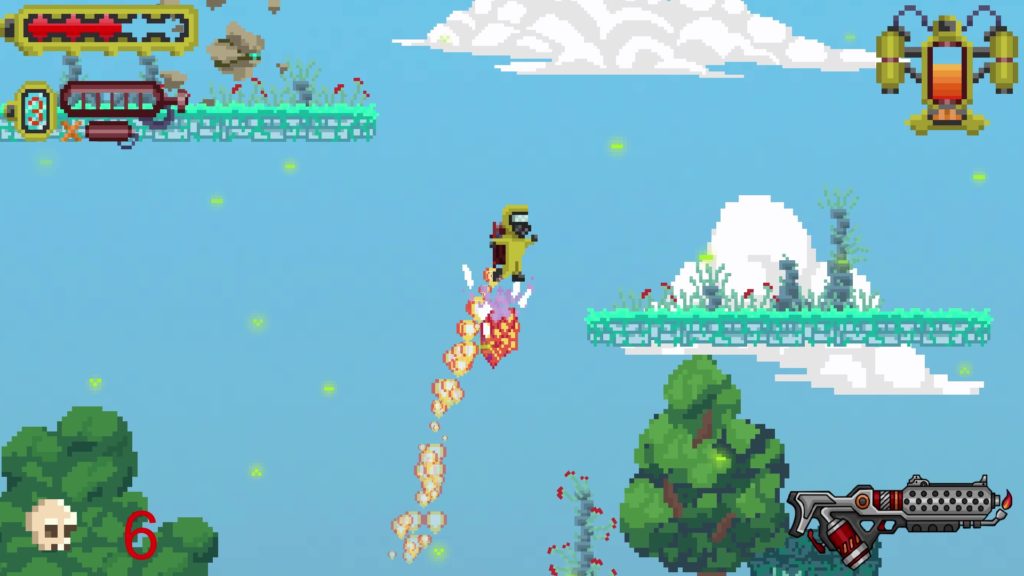
Arsonist Heaven is not good. But if nothing else it serves as a great lesson as to why you should do your research before attempting to make a game like this. Good games are good because they’ve refined and perfected their craft — so developers should spend some extensive time taking a closer look at what really worked in numerous classics, then endeavour to incorporate the lessons those games have to teach in their own work.
As it stands, Arsonist Heaven has failed to learn any of those important lessons, and as such is not a game I can recommend in any way. But at least in failing to learn those lessons, it, in turn, has its own important lesson to teach.
Arsonist Heaven is available now for Nintendo Switch, PS4/5 and Xbox blahdeblah. Thanks to eastasiasoft for the review code.
Join The Discussion
Rice Digital Discord
Rice Digital Twitter
Rice Digital Facebook
Or write us a letter for the Rice Digital Friday Letters Page by clicking here!
Disclosure: Some links in this article may be affiliate links, which means we may earn a small commission if you make a purchase after clicking on them. This is at no additional cost to you and helps support Rice Digital!
- Letter from the Editor: passing the torch - June 30, 2023
- Super Woden GP 2 is looking promising - June 30, 2023
- Inti Creates is making a 32 bit-style Love Live action platformer - June 26, 2023





